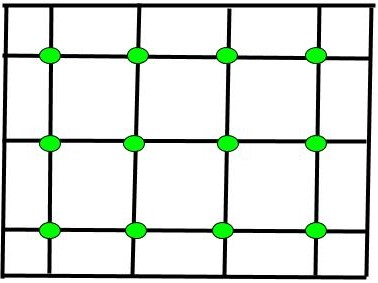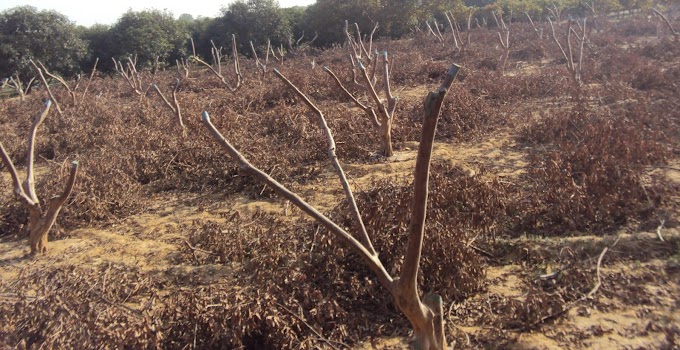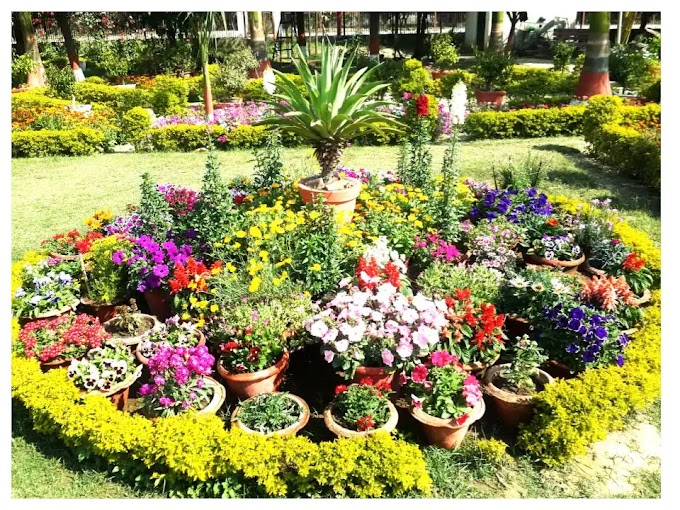During post-green revolution era it is imperative to develop strategies that can sustain higher levels of production without an adverse affect on the environment because we need 29.2 million tonnes potato, 149.6 million tonnes vegetables and 83.9 million tonnes fruits and more quantity of food grains, pulses, edible oils, milk and meat by the year 2020 (Paroda and Kumar,2000) to feed growing population of India. In order to produce required quantity of edibles from the existing resources under prevailing climatic conditions, we must have to generate need-based, location specific and environment friendly technology for agriculture sector. Delineation of agro-climatic zones mainly based on soil types, water availability, rainfall and temperature which influence the agricultural production is essential step to increase the production by sustainable exploitation of available resources. According to FAO (1983) agro-climatic zone (ACZ) is a land unit delineated in terms of major climate and growing period, which is climatically suitable for certain range of crops and cultivars. The Planning Commission in its meeting held on 20th July, 1987 accepted 15 agro-climatic regions which were delineated on the basis of homogeneity in agro- characteristics
such as rainfall, temperature soil, topography, water resources, cropping and farming systems in that particular zone to enable effective agricultural planning for balance regional growth. Total 131 agro-climatic zones (ACZ) corresponding to each of the 15 agro-climatic regions were identified in the country under National Agricultural Research Project (NARP) Whereas the National Bureau of Soil Survey & Land Use Planning (NBSS&LUP) delineated 21 agro-ecological zones (AEZ)based on the soil, physiography, length of growing period (LGP) and bio-climate of the region. NARP had been lunched by ICAR to set up or upgrade a zonal research station in each agro-climatic zone with the objective to generate location specific agricultural technology considering agro-ecological conditions of the zone to over come the constraints of production. The characteristics, problems and potential horticultural crops of 15 agro-climatic regions or Zones accepted by planning commission of India during 1985-90 are described here under:
1. Western Himalayan Zone: The zone comprises Jammu and Kashmir, Himachal Pradesh and Uttar Pradesh Hills composed of skeletal soils mostly silty loam in nature prone to erosion. Lands have steep slopes in undulating terrain. The crop growing period is less than 90 to 210 days and annual rainfalls varies from 165 to 2000 mm. Low productivity, land slides and slips are common problems of the zone. The zone is potential for apple, walnut, litchi, cherry, strawberry, peach, plum, kiwi, apricots, almond, potato, pea, tomato, cauliflower, rose, gladiolus, ginger and saffron cultivation.
2. Eastern Himalayan Zone: It consists of Sikkim and Darjeeling Hills, Arunachal Pradesh, Meghalaya, Nagaland, Manipur, Tripura, Mizoram, Assam and Jalpaiguri as well as Coochbihar districts of West Bengal. The zone is characterized with high rainfalls (1400 to 12000 mm annual) with recurrent floods and high forest cover. The crop growing period is more than 270 days. The shifting cultivation, poor irrigation, soil erosion and low productivity are common problems in the zone. The orange, lemon, banana, kagzi lime, pineapple, papaya, cherry, cauliflower, cabbage, orchids, black pepper, ginger, mushroom, tea are the potential horticultural crops of the zone.
3. Lower Gangetic Plains Zone: This zone consists of West Bengal-lower Gangetic plains having alluvial soils and high population pressure. The zone is rich in water and soil resources with 1300 to 2100 mm annual rainfalls. The crop growing period of the zone is 150-270 days but productivity is low. The flood is common problems of the zone. The zone has potential to produce mango, guava, litchi, bael, potato, brinjal, tomato, peas, onion, cucurbits, chillies, dahlia, tuberose, marigold, black pepper, kalmeg and mushrooms.
4. Middle Gangetic Plains Zone: The zone consists of 12 districts of Eastern Uttar Pradesh and 27 districts of Bihar plains. The zone is characterized by high annual rainfalls (1211-1470 mm) and flood. The crop growing period of the zone is 150-180 days but productivity is low due to mono cropping of rice. The mango, guava, litchi, jamun, bael, papaya potato, brinjal, okra, tomato, peas, onion, cucurbits, marrigold, gladiolus and mushroom are the potential crops of the zone.
5. Upper Gangetic Plains Zone: The zone consisting 32 districts of Uttar Pradesh which have been divided into three sub-zones viz. Central, South-Western and Northern-Western Uttar Pradesh. The zone is characterized with good facilities of tube-well and canal irrigation, 721-979 mm annual rainfalls, poor drainage and 150-180 days’ crop growing period. The saline and alkaline soils are the main problem due to which productivity is medium in the zone. The zone is suitable for mango, guava, grapes, aonla, bael, papaya, peach, jamun, peas, tomato, brinjal, carrot, onion, cauliflower, ashwagandha and mushroom cultivation.
6. Trans-Gangetic Plains Zone: The zone comprises Punjab, Haryana, Union Territories of Delhi and Chandigarh and Srinagar district of Rajasthan. This highest net sown area & highest irrigated area falls under this zone and the land productivity is also high but underground water is over exploitation that has become problem for ground water sustainability. The zone receives 360-890 mm annual precipitation and has crop growing period of less than 90 days. The citrus, guava, grapes, aonla, mango, peas, cauliflower, potato, tomato, cucurbits, coriander, fenugreek, safed Musli, mushroom, rose. Marigold and gladiolus are the potential crops for the zone.
7. Eastern Plateau and Hills Zone: The Eastern part of Madhya Pradesh, Southern part of West Bengal, Chhattisgarh and most of inland Orissa fall under this zone. The soils of the zone are shallow and medium in depth with undulated topography. The irrigation through tanks and tube well are common in the zone. The annual rainfalls (1270-1430 mm) is good but the large portion of rainfall losses due to excess runoff. The crop growing period is less than 120 days. The zone is congenial for citrus, guava, mango, grapes, anole, pomegranate, custard, apple, papaya, potato, garlic, brinjal, tomato, cabbage, onion, tuberose, gladiolus, jasmine, ginger, turmeric, coriander and mushroom cultivation.
7. Eastern Plateau and Hills Zone: The Eastern part of Madhya Pradesh, Southern part of West Bengal, Chhattisgarh and most of inland Orissa fall under this zone. The soils of the zone are shallow and medium in depth with undulated topography. The irrigation through tanks and tube well are common in the zone. The annual rainfalls (1270-1430 mm) is good but the large portion of rainfall losses due to excess runoff. The crop growing period is less than 120 days. The zone is congenial for citrus, guava, mango, grapes, anole, pomegranate, custard, apple, papaya, potato, garlic, brinjal, tomato, cabbage, onion, tuberose, gladiolus, jasmine, ginger, turmeric, coriander and mushroom cultivation.
8. Western Plateau and Hills Zone: The zone comprises the major part of Maharashtra, part of Madhya Pradesh and one district of Rajasthan and famous for best quality oranges, grapes and bananas. The annual rainfalls in the zone is 602-1040 mm and crop growing period is 90-150 days. Under developed irrigation, excess runoff and soil erosion are the problems of the zone. The potential horticultural crops for the zone are citrus, mango, banana, guava, grapes, bael, pomegranate, papaya, Chillies, potato, tomato, onion, brinjal, marigold, lilium, gerbera, gladiolus, garlic, ginger, turmeric, safed musli, rubber, cashew nut, areca nut, cocoa and mushroom.
9. Southern Plateau and Hills Zone: This zone comprises 35 districts of Andhra Pradesh, Karnataka and Tamil Nadu. The typically semi- arid agro-climatic condition, tank led irrigation and dry land farming are common in the zone. The annual rainfalls and crop growing period are 576-1051 mm and less than 90 days, respectively. Banana, mango, citrus, guava, grapes, sapota, tomato, brinjal, okra, onion, chillies, tapioca, gherkins, gomphrena, jasmine, garlic, ginger, rubber, cashew nut, areca nut, cocoa, coconut and mushroom are the potential crops of the zone.
10. Central Plateau and Hills zone: The 46 districts of Uttar Pradesh, Madhya Pradesh and Rajasthan come under the zone. The zone has variable topography with predominance of ravines and hills. The zone receives 490-1300 mm rainfalls with more than 120-150 days of crop growing period. The poor irrigation, excess runoff, very low productivity and under utilization of horticultural potential are the problems of the zone. Mango, guava, aonla, ber, mandarin, tomato, brinjal, okra, onion, sweet potato, rose, marigold, jasmine, gladiolus, ginger, turmeric, garlic, safed musli and mushroom are the suitable potential horticultural crops for the zone.
11. East Coast Plains and Hills Zone: The zone consists of east coast of Tamil Nadu, Andhra Pradesh and Orissa. The zone is rich in water resources and soils are mainly alluvial and coastal sands. The annual rainfalls vary from 800 to 1904 mm and irrigation is done through tanks. The crop growing period is 115-210 days and salinity of soil is problem. The zone is potentially suitable for banana, mango, citrus, guava, grapes, papaya, pineapple, custard apple, sapota, brinjal, okra, tapioca, sweet potato, onion, chillies, tube rose, enthurium, gompherina, black pepper, turmeric, cashew nut and coconut cultivation.
12. West Coast Plains and Ghat Zone: The zone includes west coast of Tamil Nadu, Kerala, Karnataka, Maharashtra and Goa with a variety of soils. The water resources are rich and rainfalls varies from 1457-5000 mm in the zone. More than 270 days are available for crop growing period and zone is famous for plantation crops and spices. The salinity, acidity and excessive run off are the problems of the zone. Mango, citrus, potato, onion, garlic, tomato, peas, orchids, cloves, cardamom, cinnamon, black pepper, ginger, cashew nut, areca nut, cocoa, coconut and Mushrooms are the potential crops.
13. Gujarat Plains and Hills Zone: This zone includes 19 districts of Gujarat. The zone receives 340 to 1793 mm annual rainfalls with 90 to 150 days of crop growing period. Mango, Banana, guava, papaya, Sapota, dates, grapes, Tomato, Chillies, Cucurbit, Potato, Onion, Garlic, Aster, marigold, chrysanthemum, Isabgol, Guggal, Aloe and Jatropha are the potential horticultural crops of the zone. Semi-arid to arid conditions, rainfed areas and Water logging in canal areas are the major problems of the zone.
14. Western Dry Zone: The nine districts of Rajasthan fall under the Zone which is characterized by very low erratic rainfalls (256 mm annual) and less than 80 days’ crop growing periods. The horticultural crops like Ber, pomegranate, citrus, Mango, guava, Onion, Potato, Tomato, Cucurbits, Aster, Rose, Marigold, Gladiolus Coriander, cumin, Isabgol and Aloe have potential to thrive in the zone. Arid conditions with high evaporation, hot sandy desert and deep brackish under ground water are the common problems of the Zone.
15. Islands Zone: The Zone includes the island territories of Andaman and Nicobar as well as Lakshadweep. The annual rainfall is 2836 to 3159 mm spreading over 8-9 months of the year and crop growing period is less than 270 days. Area is rich in water resources and vegetation. Papaya, mango, sapota, Chillies, Cucurbit, Brinjal, Okra, Khus and Coconut are potential horticultural crops of the zone.
14. Western Dry Zone: The nine districts of Rajasthan fall under the Zone which is characterized by very low erratic rainfalls (256 mm annual) and less than 80 days’ crop growing periods. The horticultural crops like Ber, pomegranate, citrus, Mango, guava, Onion, Potato, Tomato, Cucurbits, Aster, Rose, Marigold, Gladiolus Coriander, cumin, Isabgol and Aloe have potential to thrive in the zone. Arid conditions with high evaporation, hot sandy desert and deep brackish under ground water are the common problems of the Zone.
15. Islands Zone: The Zone includes the island territories of Andaman and Nicobar as well as Lakshadweep. The annual rainfall is 2836 to 3159 mm spreading over 8-9 months of the year and crop growing period is less than 270 days. Area is rich in water resources and vegetation. Papaya, mango, sapota, Chillies, Cucurbit, Brinjal, Okra, Khus and Coconut are potential horticultural crops of the zone.









